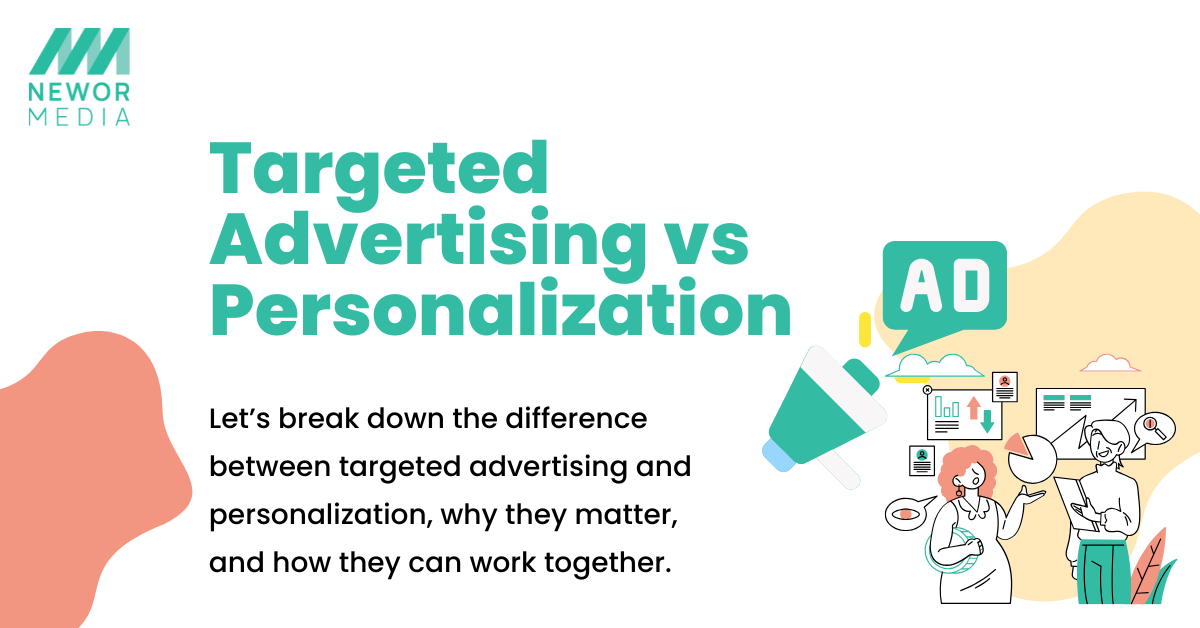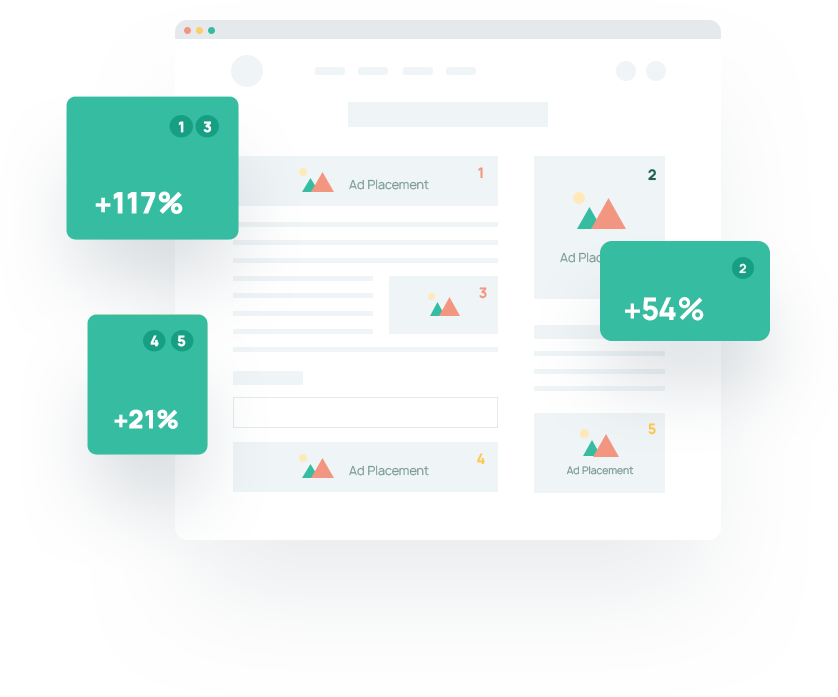When we think about digital advertising today, targeting and personalization are often spoken about and it makes sense because these two strategies have formed the way brands connect with audiences online but they’re not quite the same thing.
Marketers and publishers usually use targeted advertising and personalized advertising interchangeably, but understanding the differences between them will definitely help to create better campaigns, stronger audience engagement, and smarter monetization strategies.
Let’s break down the difference between targeted advertising and personalization, why they matter, and how they can work together.
What is Targeted Advertising?
Targeted advertising is basically means delivering ads to specific audience segments based on shared characteristics. These characteristics might include:
- Age or gender
- Geographical Location
- Browsing history
- Device
- Interests and behaviors
The goal with targeting is to make sure that the ads reach the right people, instead of sending a message out to the masses and hoping for the best. Basically think of it as casting a smaller, smarter net.
For publishers, the benefits of targeted advertising are clear: higher click-through rates, better ad relevance, and more effective use of ad inventory. You’re not just selling impressions, you’re selling access to the right audience.
For example, if a user frequently reads finance-related content on your site, ad platforms might serve them investment app ads. The ad wasn’t created just for them, but it was chosen because it matches their likely interests.
What is Personalized Advertising?
Personalized advertising, on the other hand, digs deeper. Rather than simply grouping users into segments, it tailors ad content specifically to the individual. It’s not just about who you are, but how you behave online.
Let’s say you visited a product page for running shoes but didn’t buy. The next day, you see an ad for that exact pair of shoes, maybe even with a limited-time discount. That’s personalized advertising in action.
Personalization uses data like:
- Past purchases
- On-site behavior
- Cart abandonment
- Time spent on specific content
It’s more dynamic, often real-time, and designed to feel more one-to-one.
Targeting and Personalization: Not Mutually Exclusive
Here’s the thing, personalization and targeting aren’t competing ideas. One isn’t “better” than the other. They work best when used together.
Targeted advertising helps you reach a qualified audience. Personalized advertising helps you deliver messages that resonate with that audience on an individual level.
If targeting is getting the ad in front of the right person, personalization is making sure that ad speaks directly to them.
For publishers and advertisers, combining both strategies means better performance across the board: higher engagement, lower bounce rates, and better ROI for ad buyers.
Benefits of Targeted Advertising for Publishers
From a publisher’s perspective, the benefits of targeted advertising are both strategic and financial.
- Improved user experience: Ads that are relevant to the user’s interests feel less intrusive.
- Higher engagement: When people see ads aligned with what they care about, they’re more likely to interact.
- Increased revenue: Ad buyers are willing to pay more for access to well-defined, high-intent audiences.
- Smarter optimization: With targeting, publishers get clearer insights into which segments are most valuable.
It’s not just about serving ads, it’s about serving the right ones, to the right audience, at the right time.
The Case for Personalized Advertising
Personalized advertising raises the bar by focusing on each user’s journey. And that leads to several unique advantages:
- Better conversion rates: People are more likely to click (and buy) when they feel like the ad “gets” them.
- Stronger brand recall: Personal messages stick. If a user sees a product they almost bought, they’ll remember it.
- Reduced ad fatigue: Seeing the same generic ads over and over gets old. Personalization keeps things fresh.
That said, personalization does come with challenges—especially around data privacy and user trust. Users are becoming more aware of how their data is used, and publishers need to navigate this carefully.
Navigating Privacy with Targeting and Personalization
Whether you’re using targeted advertising or personalized advertising, data plays a central role. But with third-party cookies phasing out and privacy regulations tightening, the way we gather and use data is changing.
Here are a few things to keep in mind:
- First-party data is king: Building direct relationships with your audience (like through email subscriptions or logged-in experiences) gives you better data and more control.
- Transparency matters: Users should know how their data is being used. Clear privacy policies and consent tools go a long way.
- Contextual targeting is making a comeback: Instead of relying solely on user data, advertisers are again looking at page content and context to serve relevant ads.
Smart personalization doesn’t mean that ads have to be invasive. Good targeting doesn’t require endless tracking.
Personalization and Targeting in Action
Let’s say you run a travel blog with a wide readership. You use targeted advertising to serve ads for family vacation deals to users reading “Top Kid-Friendly Destinations,” and luxury hotel ads to readers exploring “5-Star Hotels in Paris.”
Then, someone visits a blog post about road trips but doesn’t book anything. Later, they see a personalized ad for a car rental deal in their city.
That’s where the magic happens, targeting and personalization working together to enhance the experience while improving monetization.
Striking the Right Balance
At Newor Media, we’re always thinking about how to create a better advertising experience—for both publishers and audiences.
That’s why we focus on helping publishers implement smarter ad strategies that blend both targeted advertising and personalization. Whether it’s through optimizing ad placements or analyzing audience segments, our goal is to help you deliver ads that feel relevant—not random.
Ultimately, when ads feel more natural and less disruptive, everyone wins.
Final Thoughts
So, to wrap it up:
- Targeted advertising groups users into segments and serves ads accordingly.
- Personalized advertising tailors messages to the individual based on their behavior.
- Together, they form a powerful combination that improves ad relevance, engagement, and performance.
Understanding the distinction between the two and using both strategically can help you better connect with your audience, increase revenue, and future-proof your ad strategy.
If you’re looking to level up your monetization game without compromising user experience, it’s worth revisiting how you’re using personalization and targeting. Because the real power comes when the two work hand in hand.


One Comment
Comments are closed